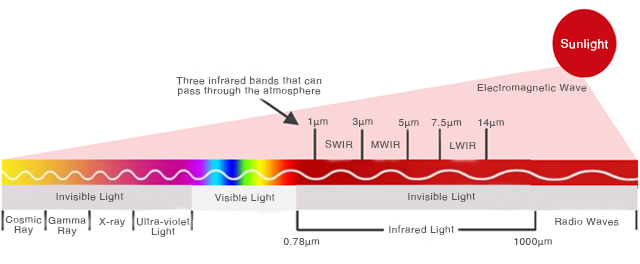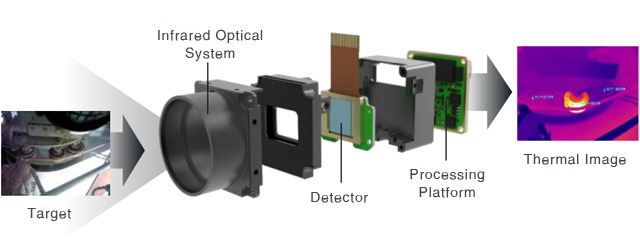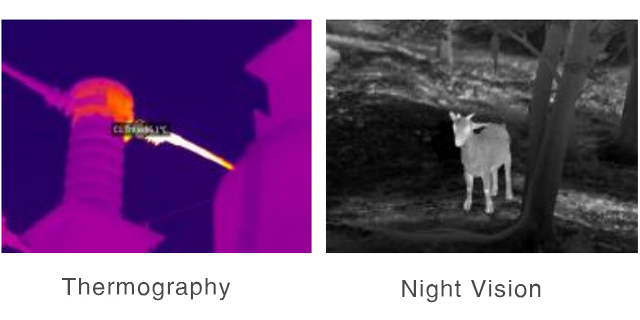1. What is Infrared?
Any object that has a temperature above absolute zero (-273.15 degrees Celsius or 0 Kelvin) emits radiation. The infrared radiation, together with visible light, ultra-violet light, X-ray, gamma ray, cosmic ray and radio waves forms the entire spectrum of electromagnetic. Wavelength of infrared is between 0.78μm to 1000μm, it is a kind of invisible light that its wavelength is longer than red light.

2. What is Infrared Camera?
Infrared thermal imaging system uses infrared detectors to sense infrared radiation, and convert it to electrical signals which are then amplified, processed to an image displayed.

3. Basic Principle
Thermal imaging technology is a kind of passive, non-contact detection and recognizing technology. It has two main functions:
-Thermography: non-contact temperature measurement and fault detection
-Night Vision: easily detect and identify the target in total darkness

4. Comparison of IR detectors
| Type | Cost | Resolution | Image | Temperature Measurement | Application |
| Pyroelectric IR Detector | About 1~10 RMB/Unit | Single Pitch | N/A | Respond to changes in ambient temperature only and no image displayed |
Automatic flushing toilet, pedestrian self-sensing light |
| Pyroelectric IR Detector | About 10~100 RMB/Unit |
A single pixel and small array with the most advanced resolution of 32×32 |
No imaging or low-resolution imaging | Temperature measurement at short distances | Ear thermometer, forehead thermometer |
| MEMS Infrared Focal Plane Array Detector | About 100~10000 RMB, based on the array size | 120×90, 256×192, 640x512, 1280x1024… | Clear Imaging | Long-range and high accuracy temperature measurement | Thermal camera, night-vision device, industrial temperature measuring tools, security monitoring, IOT, three proof phone, ADAS, forest fire prevention, etc |
Go Top